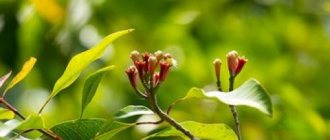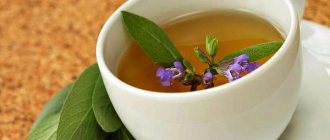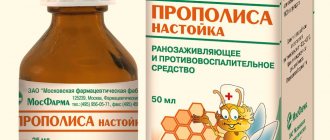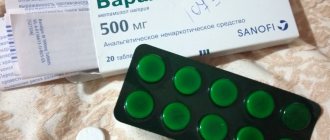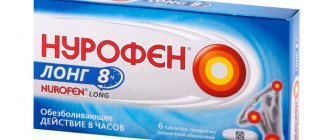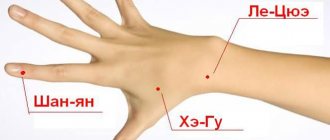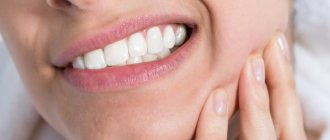Traditional medicine recipes for the treatment of periodontal disease.
• 6 g of dried lingonberry leaves are poured into a glass of hot water, boiled for 20 minutes, cooled slightly, filtered, and the volume is adjusted to 200 ml.
Rinse your mouth every 2-3 hours for periodontal disease, gum disease, and stomatitis. • A tablespoon of dry tricolor violet herb is poured into a glass of water, boiled for 15 minutes, cooled and the volume adjusted to 200 ml. Used as a mouth rinse for periodontal disease and toothache.
• For diseases of the oral cavity, a mixture of equal parts of fir and sea buckthorn (or peach) oil, as well as a mixture of fir oil and fish oil, has a good effect. Apply a few drops of one of the oil mixtures to a bandage folded in several layers, and use the bandage to massage the gums for a while. It is recommended to carry out a similar procedure 2 times a day.
• Brew 2 teaspoons of calendula flowers in 2 cups of boiling water. Let it brew and rinse your mouth with the slightly cooled infusion.
• Brew 2 tablespoons of St. John's wort in 0.5 liters of water, boil for 5 minutes, let it brew and rinse your mouth.
• Pour 10 g of crushed comfrey roots into a glass of water, cook for 10 minutes, strain. Rinse your gums with the decoction.
• Take 6 tablespoons of dry crushed agrimony herb and boil over low heat in 1 liter of water for 3-5 minutes, covering with a lid. Leave the broth in a warm place for 4 hours, strain and rinse your mouth. Gradually, the gums will become stronger and stop hurting.
• Rinsing with a 7-8-day infusion of “kombucha” helps well with inflammatory diseases in the oral cavity.
• Prepare a tincture from the rhizomes of Potentilla erecta (kalgan). To do this, pour 20 g of rhizomes into 100 ml of 70% alcohol. Leave for a week, shaking the vessel periodically. Mix 10 parts of tincture with 5 parts of glycerin. The ointment is used to treat inflamed, loose and bleeding gums.
• In order to strengthen teeth and gums, calamus powder is added to tooth powder at the rate of 0.4-0.5 g per time. Brush your teeth 3 times a day.
• If the gums are weak and often bleed, it is useful to rinse your mouth with a tincture of blackberry leaves, to which a few drops of cologne are added.
• Components of the medicine: horse sorrel (leaves) - 2 tablespoons, cinquefoil erecta (herb) - 4 tablespoons - mix and infuse in 1.5 cups of cabbage brine for 24 hours, filter. Use as a mouth rinse 6 times a day to strengthen teeth.
• Pour 2 tablespoons of St. John's wort into 0.5 liters of water. Boil for 5 minutes. Let it brew and rinse your mouth with hot infusion if your gums are bleeding.
• Mix 2 parts of crushed oak bark with 1 part of linden flowers. Brew 1 teaspoon of this mixture with a glass of boiling water, let it brew a little, then strain and cool. Rinse your mouth with warm broth several times a day.
• Prepare an infusion of 1 tablespoon of crushed walnut leaves per glass of boiling water. Use as a rinse for loose gums.
• Keep (gargle) sunflower oil in your mouth 2 times a day (morning and evening). The course of treatment is 6 months.
• Rinse your mouth with green tea: take 1 teaspoon of tea per glass of boiling water.
How to use fir oil for gums
Fir oil for gums can be used in its pure form, but be careful when doing so, as burns are possible. To avoid unpleasant surprises, you can mix fir oil with sea buckthorn, peach, and fish oil in a 1 to 1 ratio.
If the substance has never been used for treatment before, you should start with one drop. Only after half an hour, if no alarming symptoms are observed - redness, swelling, burning, you can add the product and carry out a full procedure.
Treatment should be carried out after meals, in the morning and in the evening, after rinsing the mouth or brushing the teeth. After the procedure, do not eat or drink for an hour to consolidate the healing effect.
The massage should be carried out carefully, without strong pressure - recovery depends not on the force of friction, but on the unique properties of the fir concentrate and strict adherence to the procedure schedule.
Attention! At the beginning of treatment, the gums may bleed. This is a normal phenomenon during inflammation and tissue damage. After a few days, the healing effect will be visible.
Fir oil can cause allergies, so do not exceed the indicated dosages
How to rinse teeth and gums for pain, swelling and inflammation
Which product is best to use when rinsing teeth depends on the root cause of inflammation. All drugs are divided into three main categories:
- Antiseptics, their effect is aimed at bacteria. This category also includes drugs that contain antibiotics.
- Anti-inflammatory drugs. They contain components that neutralize mediators that develop inflammatory processes.
- Rinse solutions with combined effects.
The first group is used to treat alveolitis and periostitis. It is also prescribed after tooth extraction and other surgical interventions. The second group contains non-steroidal anti-inflammatory components.
If there is an urgent need to relieve pain or inflammation before going to the doctor, you should familiarize yourself with the effects of the most popular rinsing medications and choose a suitable and safe remedy in terms of side effects.
Chlorhexidine
This solution is a popular antiseptic mouth rinse and can be used to treat the skin and mucous membranes of the body. Chlorhexidine is used against pathogenic microorganisms of the oral cavity. It does not fight fungi and viruses.
- The cost is about 15-20 rubles per bottle.
- Rinse at least 2 times a day. A concentration of 0.05% is considered low; if necessary, increase the frequency of rinsing to 4-6 times a day.
- The antiseptic effect is achieved thanks to chlorhexidine bigluconate.
Miramistin
Miramistin
Unlike the previous drug, Miramistin is able to neutralize all types of bacteria and microorganisms that are present on the teeth and gums. Can be prescribed against herpes and stomatitis. In addition to antiseptic, it has a slight anti-inflammatory effect.
- Price from 200 to 350 rubles.
- Safe for pregnant, nursing women and infants. Has a sprayer included.
- Benzyldimethyl ammonium chloride monohydrate has an antimicrobial effect.
Stomatophyte
It is considered a combination remedy, the main action is aimed at eliminating inflammation. Stomatofit is a concentrated medicine that is diluted with water (5 ml per fifth of a glass).
- The cost varies depending on the volume of the bottle: 150-250 rubles.
- The medicine contains extracts of chamomile, arnica, oak bark and other plants.
- Not recommended for children due to the presence of alcohol in the composition.
- Rinse your mouth for a minute. The course of treatment takes 10 days, 2-4 times a day.
Tandum Verde
Similar to chlorhexidine, but has a higher concentration of the substance (0.15%). The combined effect is aimed at reducing gum swelling, pain relief, killing bacteria and relieving inflammation.
- The price starts from 280 rubles.
- Weekly course of treatment 2 times a day.
- Available for rinsing teeth and gums from 12 years of age (contains alcohol).
Rotokan
One of the broad-spectrum preparations that can be used to rinse a tooth in case of acute pain.
- Removes swelling and spasms, reduces inflammation, accelerates the regeneration process.
- Prohibited for persons under 18 years of age. Use no more than 5 days up to 3 times a day. Has side effects.
- Price - 40-50 rubles.
- Requires mixing with water before rinsing.
Fir oil for skin problems
- Bath with baby soap for good skin and against various dermatitis.
For such procedures, we initially prepare the emulsion in an enamel bowl. Boil 600 ml of water, grate 30 grams of baby soap on a coarse grater and add it to the water. The mixture will be ready as soon as the soap is completely dissolved. After this, remove it from the heat and let it cool for about 15 minutes. Then, stirring constantly, pour in half a liter of essential oil, pour into small vessels, close them tightly with a lid and keep in a dark place. Add 15 ml of the resulting mixture to fairly warm (39–41 degrees) bath water and stir. After a quarter of an hour of such a bath, you need to lie down and rest for about an hour. You need to repeat increasing the amount of mixture by 5 milliliters with each procedure (and so on up to 85 ml). We take a bath every day, about 20 times. - Against warts.
Four times a day, we apply a small amount of ether directly to the warts themselves, using a tampon or a cotton swab. - Against various entities.
Mix 300 grams of squeezed and thickened celandine juice and 20 ml of fir. We treat acne and warts three times in 24 hours. - With lemon and garlic for warts.
Chop two small cloves of garlic and add the freshly squeezed juice of half a lemon. Add ten milliliters of acetic acid and thirty of our main product there. Before daily lubricating areas with warts, pre-steam them. - Composition for lichen.
We lubricate the lichen spots a couple of times a day with a mixture of four cloves of garlic, the juice of one small lemon, ten milliliters of acetic acid and 20 ether. We continue until the symptoms disappear. - Alcohol tincture for lichen.
For this recipe, take equal portions of propolis and fir, approximately 20 grams each, add alcohol and let stand for 72 hours. Use until visible lesions disappear. This method is not suitable for open wounds. - Compress for cuts, cracks, wounds, infections.
We soak a clean bandage in oil and apply it to the affected area, and secure it with cling film on top. This bandage should be changed every 12 hours.
Contraindications for use
It is strictly forbidden to use fir oil during pregnancy
The use of this product is strictly prohibited in the following cases:
- for kidney diseases;
- in the presence of peptic ulcers and gastritis;
- during pregnancy.
Despite the large number of beneficial properties of fir oil, the substance is contraindicated for use in the following cases:
- pregnancy (in any trimester) and natural breastfeeding;
- high sensitivity or intolerance to the components of the substance (allergic reactions to fir essential oil are common);
- renal failure, with nephrological diseases;
- under 6 years of age;
- fever, elevated body temperature.
It is not recommended to take hot baths with the addition of natural extract if you have diagnosed diseases of the cardiovascular system. Taking the oil internally is prohibited for stomach ulcers and gastritis; external use is limited if the skin has wounds, scratches, burns, or mechanical damage. Inhalations with fir are unacceptable for bronchial asthma and nosebleeds.
The substance is used with caution when:
- high blood pressure;
- oncological diseases;
- epilepsy;
- acute stage of chronic diseases.
It is important to remember that the composition is incompatible with alcohol, as well as the risk of overdose. It is considered optimally acceptable to take the extract internally - no more than 5-7 drops per day, externally - 10 g maximum
The list of joint and neuralgic diseases that can be treated with fir oil is extensive:
- Arthritis and arthrosis (ankle and knee joints).
- Trigeminal neuralgia.
- Rheumatoid arthritis.
- Osteochondrosis.
- Rheumatism.
- Joint pathologies.
- A deficiency of nutrients in cartilage, causing pain.
- Bursitis.
- Cervical hernia
- Mechanical damage to ligaments.
Contraindications
Fir oil cannot be used by persons with hypersensitive skin who cannot tolerate this product due to allergies. During the period of bearing a child and during breastfeeding, expectant and current mothers are prohibited from using fir oil externally, not to mention ingesting it.
It is recommended to avoid the use of any essential oils and mixtures based on them during pregnancy, especially in the first trimester. They should also not be given to children under 8 years of age.
In addition, there are a number of other rules that must be followed in order not to cause harm to the body:
Always mix fir essential oil with a carrier oil if you plan to apply it to your skin. Concentrated products may cause irritation and burns. Be sure to do an allergy test before using it. This is done by diluting 1 drop of essential oil in 4 drops of carrier oil and applying this mixture to a small area of skin. If it turns red and you experience a burning sensation, then it is better not to use the prepared product. Avoid direct contact of the mixture with eyes or other mucous membranes. Do not use on any other particularly sensitive areas of the skin. Do not ingest fir essential oil in its pure form.
Use with caution if there are people in the room with epilepsy, asthma or high blood pressure.
Did you know? The rate of hair growth varies throughout life. From 18 to 24 years old they grow fastest. And during the day, hair follicles are more active at night than during the day.
When using essential oils, try to adhere to the general rules for their use. If you have serious problems with your hair, provide it with regular care and be sure to monitor your body’s reaction. The absence of any visible results from using oils for 1-1.5 months is a signal to replace the products used.
FIR OIL AND THE NASAL MUCOSA
The nasal mucosa is covered with small glands whose purpose is to produce liquid (day) and viscous (night) mucus. The epithelium of the nasal mucosa is equipped with a system of hairs that purify the inhaled air, “catch” particles of inhaled dust and, together with the secreted mucus, enters the nasopharynx from the nose. During a cold, a virus appears in the nasopharynx and gradually a bacterial colony develops in the nose. To fight infections, the body increases blood circulation. Due to increased blood circulation, the vessels dilate, the nasal turbinates swell, the nasal passages narrow, and as a result a bottleneck effect is created. The use of inhalation with fir oil strategically solves this problem. But vasoconstrictor drops and sprays, traditionally used at this moment, solve this problem only tactically, achieving a short-term solution, and after a while everything returns to its previous state.
Treatment of periodontal disease at home
Everyone has their own characteristics of the body, which do not allow us to produce a universal remedy for periodontal disease. The multifactorial nature of the development of the disease involves a complex effect using both traditional means of treatment and folk methods at home.
An integrated approach to treatment, even at home, will help you get rid of periodontal disease once and for all.
Drug therapy
In severe periodontal disease, purulent foci may appear, especially in adult patients. In this case, the use of antibacterial drugs is required. The main indications for the use of antibiotics are the following:
- lack of positive effect from other drugs;
- the appearance of gum pockets and purulent exudate;
- development of inflammation;
- a rise in body temperature during periodontal disease without the main signs of acute respiratory viral infection or influenza.
Antibacterial drugs should be prescribed by a doctor after examination, taking into account the sensitivity of the microflora.
Ointments and gels
A variety of pharmaceutical products will help cure periodontal disease. It has been established that the most effective ointments are:
- Cholisal: provides relief from pain and inflammation.
- Heparin ointment: prevents gum atrophy by improving blood circulation in the periodontium.
- Solcoseryl: has a pronounced antimicrobial and regenerating effect.
- Troxevasin ointment: strengthens the capillaries of the gums and provides trophic function in them.
- Levomekol: prevents the proliferation of pathogenic bacteria, which prevents the formation of purulent exudate.
It is advisable to combine all ointments and gels with compresses or lotions on the gums. Treatment of periodontal disease with folk remedies will be a good therapeutic addition. For periodontal disease, finger massage is also indicated.
Rinse aids
Many medicinal products in the form of rinses are sold ready-made. The solutions have anti-inflammatory, strengthening, deodorizing and regenerating effects. For periodontal disease, rinses are used:
- Splat. The composition contains Biosol, Polydont and nettle extract. Provides hemostatic and tonic effects.
- Locale. Eliminates bleeding and inflammation.
- The president is a pro. Has a bactericidal effect. The composition includes several extracts of medicinal herbs.
Typically, a rinse for periodontal disease has a therapeutic effect after just a week of use at home.
Homeopathy
Today the attitude towards homeopathy is ambiguous. Treatment of periodontal disease is allowed as an additional intervention. Homeopathic remedies are used at home. They help eliminate bad breath, reduce salivation and the risk of developing loose teeth.
The main drugs used for periodontal disease are:
- Phosphorus;
- Iodium;
- Natrium carbonicum;
- Silicia;
- Nitricum acidum.
Vitamins
Treatment of periodontal disease should be both local and general. The use of vitamins will help speed up the healing process and prevent the development of severe complications. In addition, they will strengthen the immune system. For periodontal disease you need:
- Vitamin P;
- Ascorbic acid;
- Vitamin B1 and B6;
- Folic acid;
- Vitamin A.
The drugs help reduce bleeding and prevent further jaw atrophy. Vitamins are prescribed by injection or orally in tablets.
https://youtube.com/watch?v=J8BRhsZ9DT0
Physiotherapy at home
Physiotherapy procedures for the treatment of periodontal disease at home include rinsing, applications and finger massage of the gums. Despite the apparent safety of these methods, they must be selected individually.
Only a dentist will fully explain the method of performing a finger massage of the gums. There are some subtleties in this procedure that will help restore the affected tissue even at home.
The most effective folk remedies for treating periodontitis at home
Folk remedies used at home are usually herbal infusions and decoctions. You can rinse your mouth with one product, but change the composition every 3 hours (for example, at 10 o’clock rinse your mouth with a chamomile decoction, at 13 o’clock with a decoction of oak bark, at 16 o’clock with a decoction of St. John’s wort, etc.). Or you can use a complex multi-component collection, compiling it yourself. What herbs have proven themselves in the treatment of periodontitis?
- Infusion of calendula flowers.
- Infusion of oak bark.
- Comfrey root infusion.
- Propolis.
- St. John's wort decoction.
- Infusion of linden blossom.
- Decoction of lingonberry leaves.
- Eucalyptus infusion.
- Sage decoction.
- Walnut leaves.
- Pine needles.
- Violet tricolor.
It is very good to combine herbs such as oak bark and calendula, oak bark and linden blossom, calendula and linden, sage and chamomile, that is, combine a product with an antiseptic effect with a plant that has an astringent effect. The raw materials are taken in equal quantities, poured with boiling water, and covered to infuse. Then the solution is filtered after 20-30 minutes. Rinse your mouth with a warm solution. The decoction can be stored in the refrigerator for 2 days, but it is better to use it on the same day.
Once again, we would like to draw your attention to the fact that treating periodontitis at home with folk remedies alone will not give results; it can improve your well-being and create a false impression of a good effect. Don't fool yourself
The process will progress if the doctor does not remove the underlying cause of the disease. Therefore, a visit to the dentist is mandatory!
Essential oil for toothache
Clove and mint oils will help with toothache - these remedies have been known for several centuries. A cotton wool soaked in these oils should be applied to the sore spot. These oils will desensitize the nerve and allow you to endure the pain until you go to the dentist.
Sage oil is also often used for toothache - it can be dripped onto cotton wool and placed in the ear on the side of the painful tooth. For severe pain, frankincense oil will help, but use it carefully and infrequently - with prolonged exposure it damages tooth enamel. Oils of geranium, lavender, ginger, pine and basil can also relieve toothache.
Rinsing for periodontal disease with folk remedies
Rinsing with herbal decoctions and mixtures is an effective treatment method for periodontal disease. Traditional healers know many plants that can have a positive effect on inflamed gum tissue.
It is important to know that before each rinse with medicinal herbs, you need to thoroughly brush your teeth.
- A decoction of oak bark and linden flowers. Oak bark has antiseptic and anti-inflammatory properties. The proportion should be as follows: oak bark/linden: 2:1. A teaspoon of the mixture is poured into a glass of boiling water, infused, and filtered through a bandage or gauze. You need to rinse your mouth with a warm solution several times a day.
- Treating periodontal disease with tea tree oil can be very beneficial. This plant has antiseptic properties. How to properly prepare the solution: you need to add 6 – 7 drops of tea tree oil to a glass of warm boiled water. Rinse at least 4 – 5 times a day.
- Garlic will help get rid of periodontal disease. The garlic needs to be chopped. You need to take a teaspoon of chopped garlic and pour it with a glass of hot black tea. Leave for half an hour, strain and the infusion is ready. Rinse for at least 10 minutes at a time. Do the procedure at least 2 times a day.
- Kombucha infusion will help cope with gum inflammation. An infusion that is at least 9 days old is suitable for rinsing. To make the infusion as effective as possible, add a tincture of blackberry roots and blue cornflower flowers to it.
- Kalanchoe juice will help reduce toothache and bleeding gums. Cut leaves must first be kept for 10 days in a cool, dark place. Then you need to make a paste from them, from which the juice is squeezed out and infused for 2 - 3 days. The next step is to filter the juice and mix it with boiled water in a 1:1 ratio.
- St. John's wort infusion is a very effective method for preventing bleeding gums. Inflammatory processes are relieved with the help of tannins and essential oils present in St. John's wort. 5 tablespoons of herbs are poured with boiling water and left to cool completely. You need to rinse your mouth with the strained solution until the bleeding stops completely.
- An aqueous solution of alcoholic (15%) propolis helps well: 20 drops per glass of boiled water.
- 1 teaspoon of propolis (tincture) + 2 teaspoons of calamus tincture. Rinse your mouth with the prepared mixture for 2 – 3 minutes. It strengthens teeth and gums well and helps cure periodontal disease.
- 3 tablespoons of galangal with 1 glass of water and simmer over low heat for 10 - 15 minutes. Leave for 4 hours, strain. Use the prepared solution for oral baths or lotions.
- Two teaspoons of crushed walnut leaves are poured into a glass of boiling water and left for no more than an hour. After which the solution is filtered through cheesecloth, and it is ready for use. You need to rinse your mouth with the resulting solution at least 6 times a day until all symptoms of periodontal disease completely disappear.
- A decoction of chamomile, horsetail, St. John's wort, sage and rosehip should be rinsed in the mouth at least 3 to 4 times a day.
Gargling with herbal decoctions can be done intensively for a month, then you should take a break.
TREATING THE NASAL MUCOSA WITH FIR OIL
In fact, problems with the nose are just a symptom of another disease, most often a cold or allergy. And it is better to treat not only the nose, but the entire body as a whole. As for the nose itself, inhalations with fir oil have recently begun to be actively used. With a persistent anti-edematous and anti-inflammatory effect, it is not addictive, so its long-term use is allowed. Fir oil is indicated primarily for people with severe nasal congestion - vasomotor processes, polyps. It is thanks to fir oil that today much fewer operations to remove polyps are carried out than under Soviet rule. Fir oil is also used for inflammation of the paranasal sinuses. In principle, fir oil is precisely a popular alternative to vasoconstrictor pharmaceutical drops. Yes, good fir oil is not cheap, but it's worth it. Traditional medicine evaluates the effect of fir oil on the body as one of the most promising. But today nothing better can be offered. And it’s best to try with all your might to maintain the nasal mucosa in a healthy state, remembering one simple rule: the nasal cavity has the same right to care as the oral cavity. Do we brush our teeth regularly? So you should constantly work on your nose. This should be the norm!
Treatment of diseases of the musculoskeletal system
For many diseases of the musculoskeletal system, doctors recommend the use of massage procedures. Such actions help improve blood circulation and lymph flow, thereby enhancing the regenerative functions of the body. During these procedures, pain, inflammation and swelling of the limbs are eliminated.
For this reason, it is customary to add fir oil to the basic massage cream (a few drops) and carry out treatment courses of 10–15 procedures. This massage is effective for radiculitis, osteochondrosis, arthritis, as well as for vascular diseases - varicose veins, etc.
FIR OIL OR PHARMACEUTICAL DROPS
Vasoconstrictor drops cause a sharp spasm of the vessels of the nasal mucosa, the passage increases, breathing becomes easier, then the tissues return to their original position. This is the insidiousness of vasoconstrictor drops and sprays. Due to a spasm in the nose, blood circulation fails, and the mucous membrane gradually begins to become decrepit, as it lacks nutrients. Solving immediate problems with nasal congestion can lead to serious problems in the future. But there is another side to the coin. When the effects of the drugs wear off, a sharp dilation of blood vessels occurs, the mucous membrane receives a large amount of blood, which leads to an increase in the nasal turbinates - hypertrophic rhinitis, a serious disease for which only a surgeon can help. As a rule, you can lose the inferior turbinates. That’s why it’s worth thinking about using folk remedies of plant and animal origin. The use of fir oil can relieve nasal congestion without leading to rhinitis.
Beneficial properties of sea buckthorn leaves
The beneficial properties of sea buckthorn leaves can be taken as tea, with its help you will get rid of hypertension, atherosclerosis, coronary heart disease, it is also very effective for pneumonia, diabetes, pleurisy and dermatitis. A decoction of sea buckthorn leaves can be used to rinse your mouth for infections and sore throats. Also, the beneficial properties of sea buckthorn leaves serve as an excellent prophylactic during a flu epidemic.
Sea buckthorn leaves will help in the treatment of liver diseases. The leaves contain vitamins C and E, flavonoids and antioxidants, as well as important fatty acids that have a healing effect in cases of liver malfunction or damage. An infusion of sea buckthorn leaves helps with gout. You can prepare it as follows: 1 tbsp. crushed dry leaves, pour a glass of boiling water and leave for about half an hour, then filter and take 1/2 glass 3 times a day.
Also, the beneficial properties of sea buckthorn leaves in an infusion can be used for joint diseases and rheumatism. 1 tbsp. dry crushed raw materials are poured into a glass of water and boiled for 10 minutes, filtered and boiled water is added to the original amount, taken 2 times a day, 1/2 cup. If you want to brew tea with sea buckthorn leaves, take the raw material at the rate of 5g per glass of boiling water.
The beneficial properties of sea buckthorn leaves can also be used for cosmetic purposes. In particular, rinses based on sea buckthorn leaves help cope with hair loss and seborrhea. In order to prepare it you need to take 5-6 tbsp. dry crushed sea buckthorn leaves or shoots per 1 liter of water and boil the required amount for 10-15 minutes.
If you have skin problems, such as acne, then an effective way to get rid of them and tighten the pores is to use sea buckthorn leaf lotions. Place the raw materials with the addition of chamomile into gauze bags, then steam them in boiling water until soft, cool and apply to problem areas of the skin, lie down on the bed and cover your face with a towel. After 10-15 minutes, remove the application and finally wipe your face with a piece of ice.
The beneficial properties of sea buckthorn leaves can be consumed in the form of tea, which will strengthen the immune system and become an excellent prevention of inflammatory processes within the body. Thus, tea with sea buckthorn leaves is an excellent remedy for sore throat, as well as poisoning, as it contains tannins. Tea can be prepared from both dry and fresh sea buckthorn leaves.
For various skin diseases, such as psoriasis and neurodermatitis, it is recommended to take baths with sea buckthorn leaves. Only to them it is also worth adding chamomile, knotweed, viburnum branches and horsetail. Wrap all these ingredients in a gauze bag and keep it under running water while the bath is running. This mixture can also be used for local foot or hand baths.
Sea buckthorn is a truly unique plant. It can be called one of the most useful and effective healing agents that nature has given us. Until now, many medicines have been created specifically on the basis of this wonderful plant or its derivatives. Experience the benefits of sea buckthorn by simply making tea from its leaves, and you will feel how your body will become stronger and will resist bacteria and viruses from the outside. Do not be ill!
Useful and healing properties of fir oil
This coniferous product is widely used in the fight against various diseases. It is used as an internal and external remedy, when fumigating a room in which patients are located, and is used in cosmetology and massages.
Most often this medicine is used for
- strengthening the immune system;
- smoothing wrinkles on the skin;
- cleansing and toning effect of the skin;
- combating swelling;
- cleansing the body of harmful microbes;
- rejuvenating processes;
- expectoration for coughs and colds;
- pain relief;
- combating inflammatory, viral and septic processes.
In the cosmetic industry, this drug is used for disinfection. Essential oil based on fir needles perfectly fights problems such as acne and other skin inflammations. It is added to water for daily washing and used as a component for various types of masks. Essential oil is traditionally used in the treatment of lung diseases. It is added to inhalations to facilitate the respiratory process and expectoration.
To boost immunity, this product is taken orally. In addition, you don’t have to buy it at the pharmacy. A person can process the needles or young branches of a plant himself, crushing them and combining them with vegetable oil, and take a similar remedy by drinking decoctions based on it several times a day. The healing properties of the product in question help treat open wounds, skin ulcers and eczema.
Did you know? A fir tree can reproduce by layering: if one of the lower branches is pressed to the ground with a stone, it will take root and soon form a new plant. Biologists gave this phenomenon a name - elfin fir.
An ointment with a fir component added to it helps with radiculitis and polyarthritis. This natural medicinal product is also used for problems with the oral cavity. Thanks to its disinfecting properties, it helps with stomatitis in children, toothaches, periodontal disease and other gum problems in adults. Fir product is used in aromatherapy, in saunas and even added when taking regular baths. This will help calm your nerves, boost your immunity and improve your metabolism.
Special gymnastics for gums
Among all the folk remedies for the treatment and prevention of periodontal disease, several special “gymnastics” techniques stand out. They are designed to increase and normalize the load on the gums, thereby improving blood supply and microcirculation in the soft periodontal tissues, and accordingly, activating all metabolic processes.
This helps reduce and relieve the inflammatory process, strengthen bone tissue and stop the atrophic process in it.
Set of exercises
The complex consists of only three constantly repeated exercises. A thin branch of a fruit tree is used as a prop.
- Biting a twig with all teeth alternately from top to bottom.
This is done very carefully and slowly in the first week. In the next two - more actively. Depending on the ease of implementation, it continues for 2–3 weeks, once every day. - Next, the following exercise is added, which consists of alternately moving the jaws back - forward and from left to right. At the same time, the twig is tightly squeezed with the front teeth. Performed together with the first for a month.
- One end of the branch should be squeezed with your front teeth, and the second should be pulled strongly with your hand. There should be a feeling that a piece of the twig needs to be bitten off. Performed immediately after the first two exercises once a day.
These exercises should be performed regularly over a fairly long period of time. For people suffering from periodontal disease, it is better to make it a habit, like brushing your teeth every day.
Gymnastic exercises
The complex is performed for 3–5 minutes at first, and subsequently increases to 5–7 minutes. Each exercise is performed for 10–15 repetitions. It should be done once a day after brushing your teeth and rinsing, preferably in the morning.
- With short and rhythmic movements you need to consistently close and open your mouth.
- With the tip of your tongue you need to touch the upper palate and move it as far back as possible. While holding your tongue in this position, you need to open and close your mouth wide.
- Take water into your mouth, do not swallow. Try to squeeze the water between your teeth and the inner surface of your cheeks for a few seconds, then spit it out.
- A short tapping of the cutting edges of the teeth against each other has a beneficial effect on bone tissue and soft tissues.
Finger massage
Massage should also be performed daily after hygiene procedures.
To do this, use your index finger and thumb to make circular movements along the surface of the gum mucosa. You should start with the chewing teeth, gradually moving to the front teeth.
After this, short vertical movements are performed in the same sequence, running your fingers from the root of the tooth to its neck.
All movements are performed with pressure on the gums. It should be strong enough, but painless. After completing the complex, it should be repeated on the inside of the gums.
Massage with a soft brush
In order not to damage the mucous membranes and soft tissues, it is advisable to use a brush only with very soft artificial bristles.
Before each procedure, the bristles should be rinsed well in hot water and then kneaded with your fingers. Then the massage will be completely non-traumatic, but extremely effective.
- The outer part of the gum is massaged, then the inner part. Use soft, short stroking movements from the back to the front. Then in the vertical direction: from the neck of the tooth along the gum to the transitional border with the cheek or palate and, vice versa, to the border with the tooth.
- You can also perform pulsating circular movements with the bristles gently enveloping the gums.
- The brush is placed so that when pressed, its bristles cover the crown of the tooth. Horizontal movements are made along the gums from one side to the other.
Physiological massage or reviewing your diet
One of the most effective methods is considered to be physiological, where the therapeutic effect is carried out using the correct chewing load. To do this, solid foods must be present in the diet every day.
Usually these are fresh fruits and vegetables, the most common being carrots, apples, cabbage, bell peppers, radishes and radishes, etc.
In addition to this physiological effect for the whole body, the saturation of these products with minerals and vitamins will also be beneficial.
